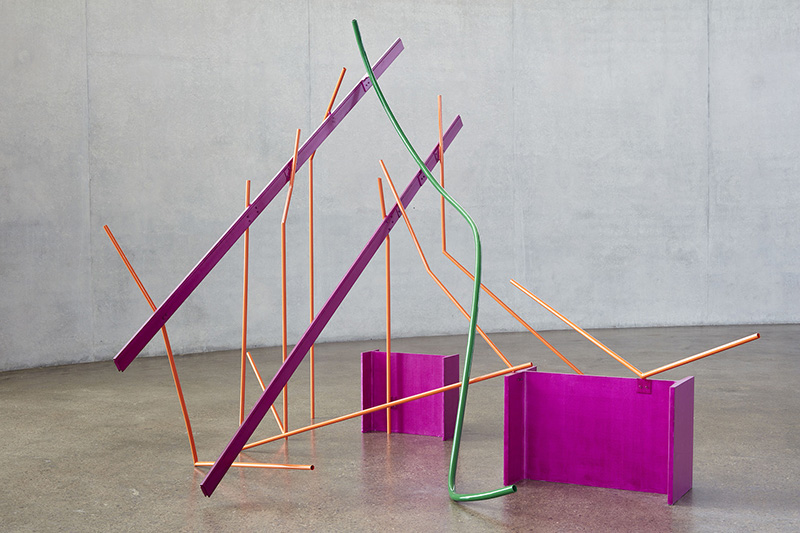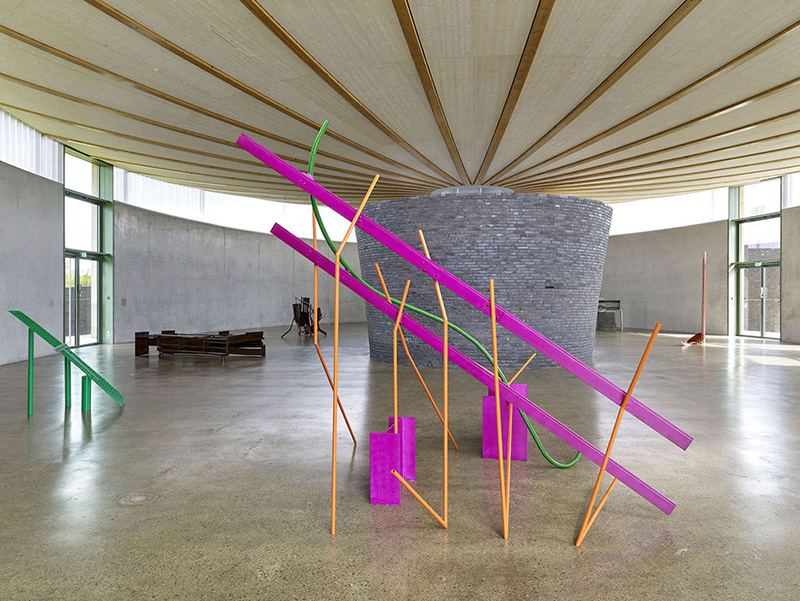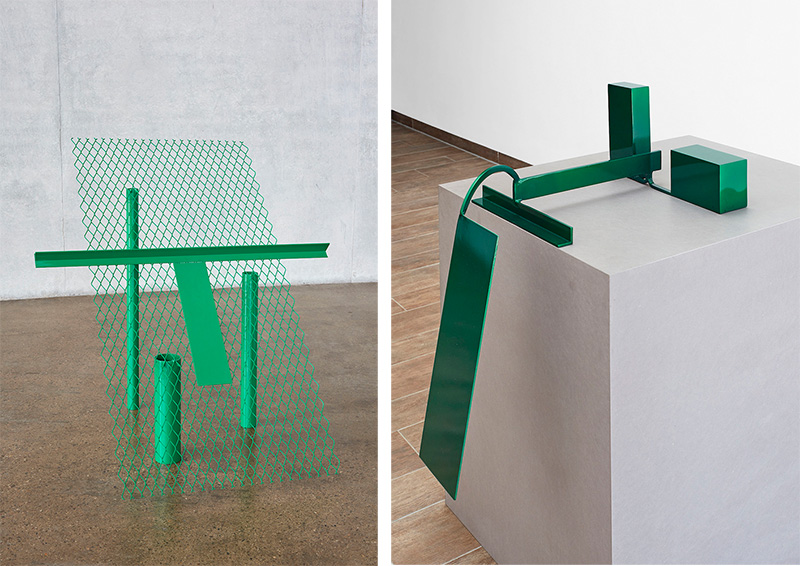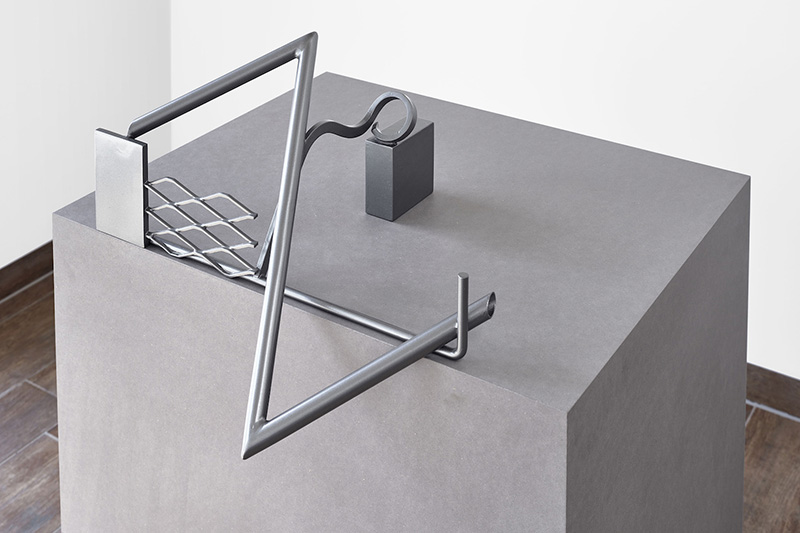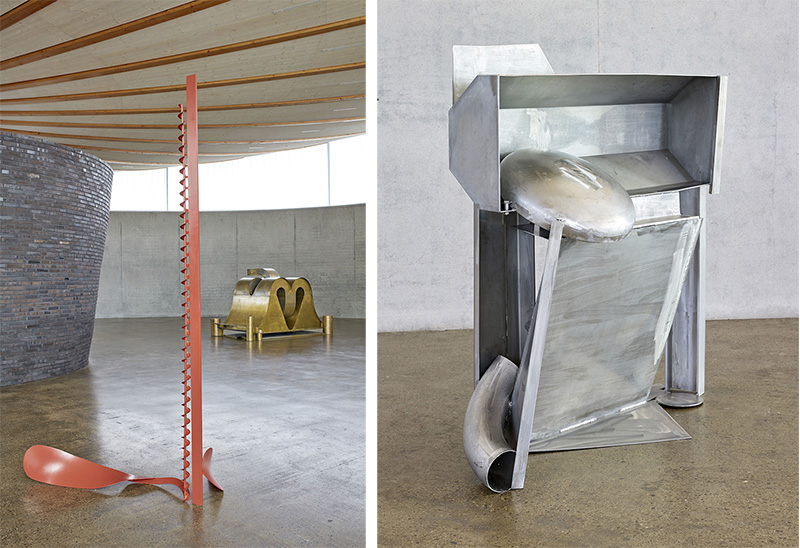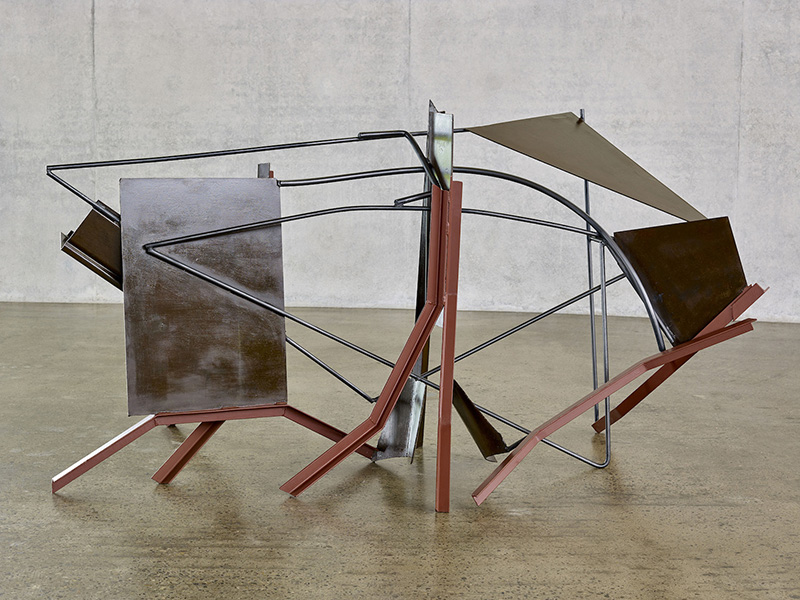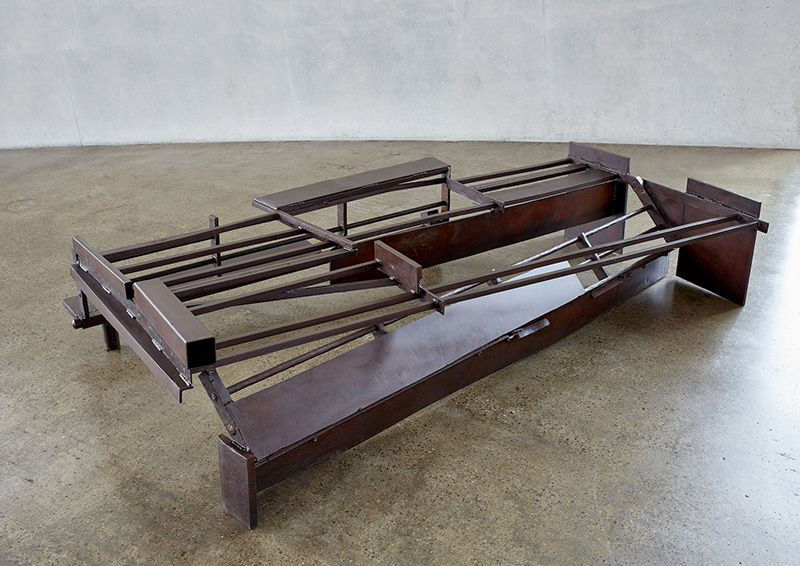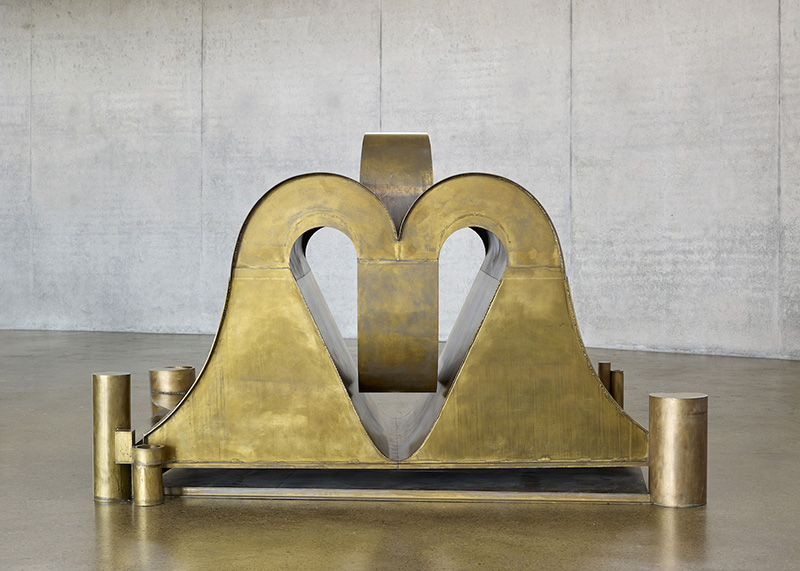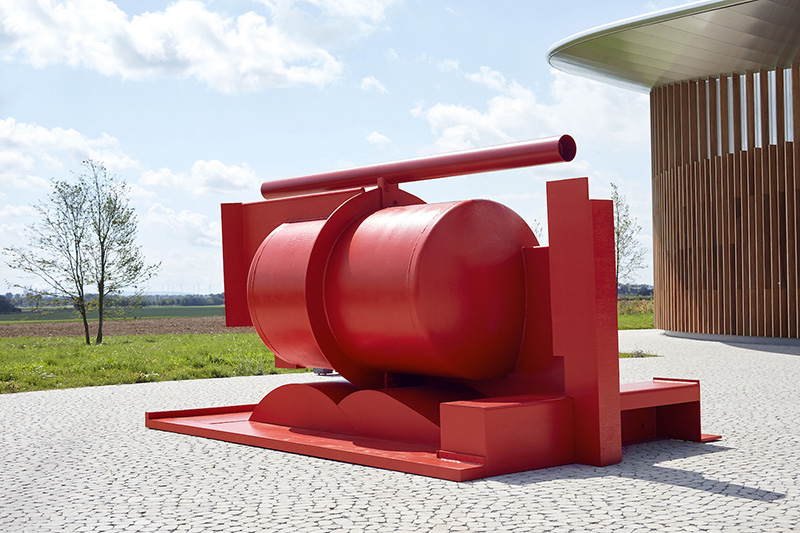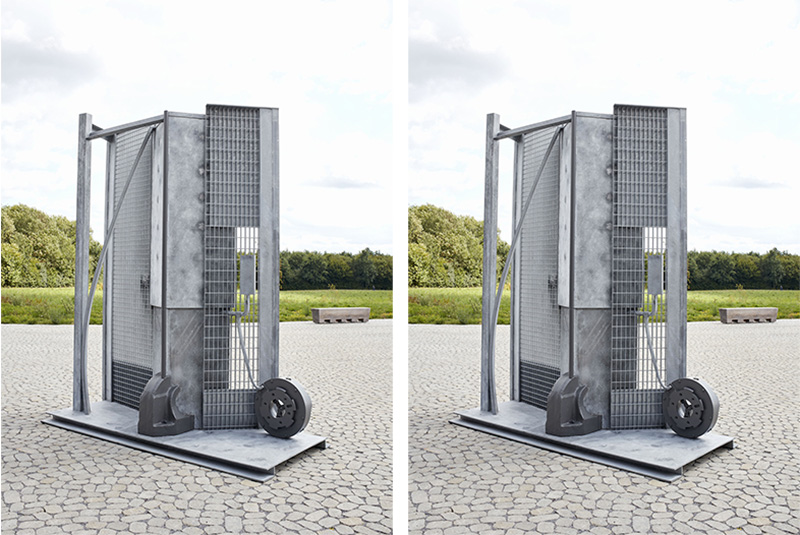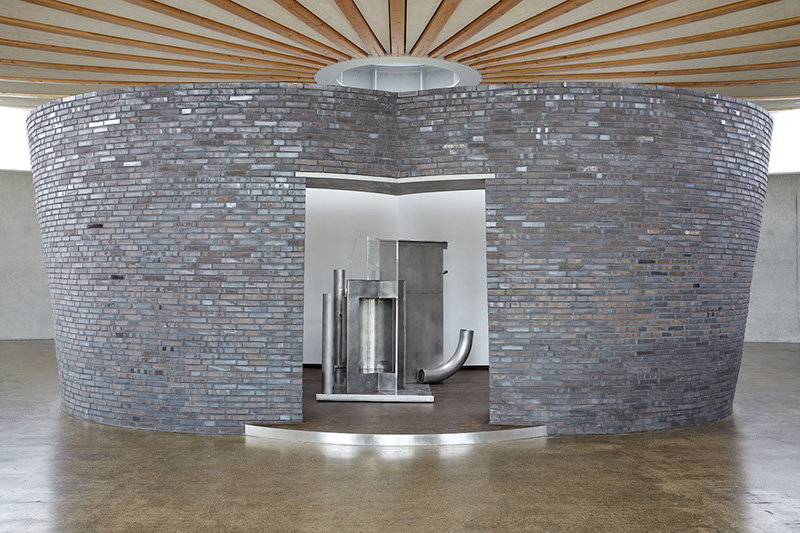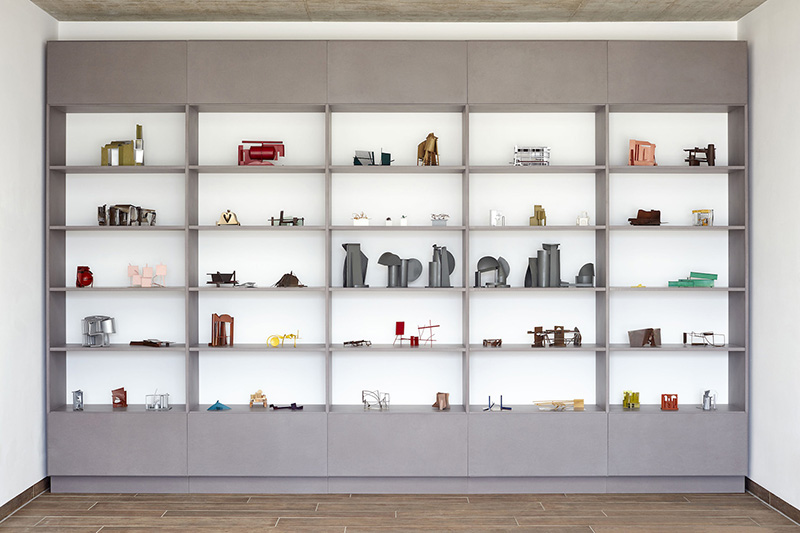ART-PRESENTATION: Anthony Caro
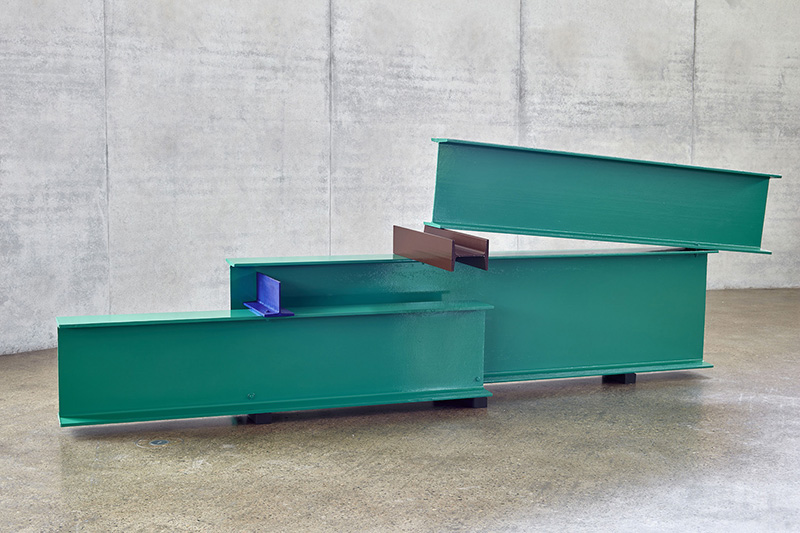 How would an abstract sculpture look? That was the question Anthony Caro asked himself when he encountered American Abstract painting in the late ‘50s. Anthony Caro revolutionized the medium of sculpture in the 1960s when he moved away from making elaborately modelled, figurative works cast in bronze, he had been working on until then, he wanted to make a sculpture that would be “As important in a room as a person”.
How would an abstract sculpture look? That was the question Anthony Caro asked himself when he encountered American Abstract painting in the late ‘50s. Anthony Caro revolutionized the medium of sculpture in the 1960s when he moved away from making elaborately modelled, figurative works cast in bronze, he had been working on until then, he wanted to make a sculpture that would be “As important in a room as a person”.
By Efi Michalarou
Photo: Thomas Schütte Foundation Archive
In the exhibition dedicated to Anthony Caro at the Skulpturenhalle of the Thomas Schütte Foundation, are on presentation works that span the artists entire career. For his first works, Caro used standard construction industry steel beams. Instead of setting them upright, he placed them on the floor, side by side and stacked on top of one other. The parts are not joined, and each one has equal significance within the overall sculpture. Painted in bright colours, these sculptures expand into the surrounding space. “Month of May” is based on the same principle, but this sculpture is far more inscrutable. Although Caro deploys only three types of steel elements here, the many delicate elements and the way they are positioned all create an open situation that draws the viewer in. Rather than presenting a uniform figure, the sculpture looks as though it has been assembled with individual parts that do not converge into a cohesive volume. In “Paris Green”, Caro introduces a plane, composed of wire mesh, which commands a pictorial quality in spite of its transparency. The wire mesh allows a free view of the pipes and profiles, while at the same time bringing all the components together in a spatially composed image that gives the sculpture a dominant viewing side. Years later, in “Sky Passage”, Caro returned to the wire mesh, though this time not as a freestanding, open plane, but instead in the form of elements that are framed and incorporated into the sculpture so that they become images within an image. Another example of Caro’s approach to contradictions can be found in the “Table Sculptures” he created in the late 1960s. These are small-format pieces that are neither studies nor models for larger sculptures, nor even miniature versions of them. They are sculptures in their own right, whose dimensions Caro clearly envisaged as such. They demand to be placed, not on the floor, but on a plinth, because the viewer is not meant to look down on them. As we can see from “Emma This” and “Barcelona Curtain”, Caro’s sculpture underwent yet another metamorphosis in the 1970s and 1980s. As before, he continued to pursue an additive process of juxtaposing individual elements, but increasingly, his sculpture begins to appear as a whole, with a boundary to the outside world. Years later, he went on to “The Eye Knows”, set on a baseplate whose function is ambiguous: both a partial plane among other partial planes, and at the same time a platform. Towards the end of the 1980s, Caro broke away once more from his own self-imposed dogma; this time by revisiting the volume as a closed form. “First Intent” is presented as an assemblage whose broad, concave elements confront the viewer directly at eye level. By contrast, “Elephant Palace” seems to deflect inspection and insight on all sides, relegating the viewer to an appreciation of its gently curved surface, whose brass finish merely heightens the sense of an enigmatic machine within. In his last works, such as “The Eye Knows”, Caro cast aside any limitation to homogeneous materials and combined plexiglass with steel panels in an unexpected reprise of his use of wire mesh. Caro did not make preliminary designs or studies, but worked on the sculpture itself. And yet there are models of his sculptures, shown in this exhibition. These models served as an inventory of what he had already made, and so, being created after the fact, their degree of perfection is extraordinary.
Info: Curator: Dieter Schwarz, Thomas Schütte Foundation, 41472 Neuss/Holzheim, Lindenweg, Junction Berger Weg, (Near Raketenstation), Duration: 10/9-17/12/17, Days & Hours: Fri-Sun 11:00-17:00, http://thomas-schuette-stiftung.de
